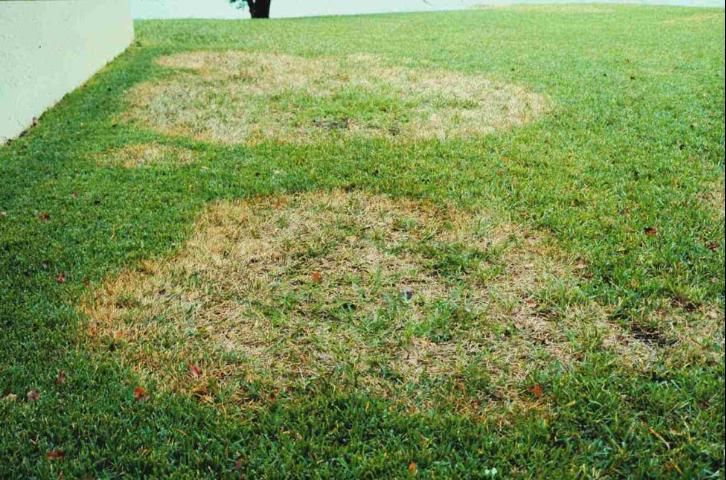
by Blake Thaxton | Sep 16, 2015

Brown patch symptoms on St. Augustinegrass.
Credit: M. L. Elliott
Beautiful weather and pleasant cool temperatures have made their way into the Florida panhandle in the last week. They will not stay long. It will be scorching hot again this year before the relief of fall settles in for good. As nice as the weather has been, it could cause problems for lawns in the panhandle. Temperatures below 80° F with moisture from rainfall can be a trigger for Brown Patch, also known as Large Patch.
The disease damages the turf by rotting the lower portion of the grass blade. When inspected closely and smelled, Brown Patch has a rotted odor associated. The disease does not affect the roots of the grass but will totally rot the base of the leaf and eventually kill the entire leaf. Patches generally die out in a 1 foot diameter area and move out from there.
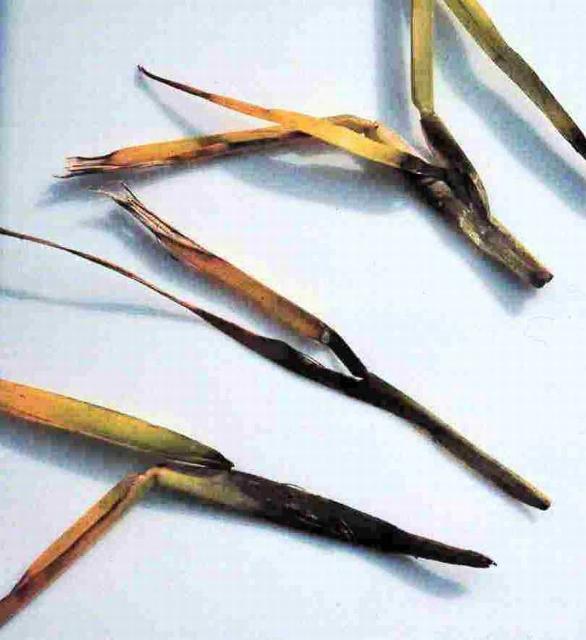
Base of leaf is rotted due to brown patch.
Credit: UF/IFAS photos
Some homeowners apply a fall application of fertilizer this time of year to “winterize” their lawns. Excess nitrogen can exacerbate the problem during times of favorable conditions. Many of the “winterizer” fertilizer on the market have a high percentage of nitrogen; so avoid these fertilizers this time of year. Choose a fertilizer with little to no nitrogen but a high percentage of potassium to encourage strong root growth headed into winter.
For more information regarding the disease, read this University of Florida/IFAS publication: Large Patch by M. L. Elliott and P. F. Harmon
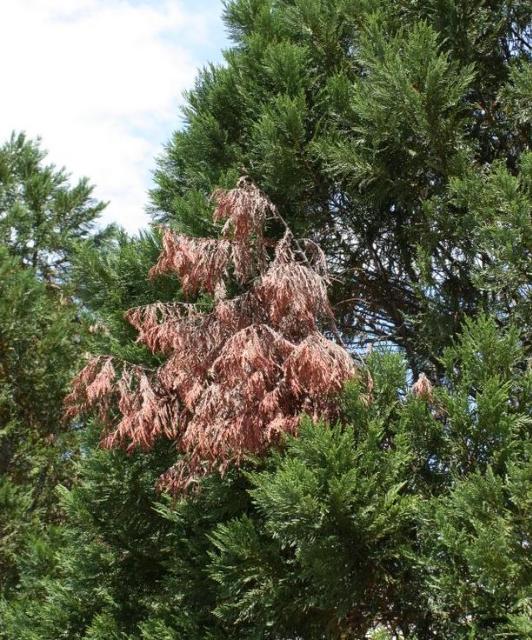
by Blake Thaxton | Aug 19, 2015
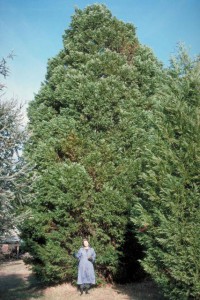
Photo Credit: Ed Gilman, UF/IFAS
Leyland cypress, x Cupressocyparis leylandii, has been hugely popular over the past 20 years as an ornamental landscape tree. It has the reputation of being a beautiful evergreen that can grow at a rate of up to 3 to 4 feet per year. Sounds like the perfect option for someone looking to make their back yard more secluded and private. Because of these traits, it has been planted widely throughout the southeastern US, including the Florida panhandle, only to succumb to intense environmental conditions and disease pressure.
UF/IFAS suggests that other species be used in place of Leyland cypress because of the damaging effects of Seiridium canker. The disease is a fungal organism that attacks the tree after periods of drought while the tree is under stress. Once the stress has occurred and rain does arrive the fungus attacks the vulnerable trees in the wetter periods. The major symptom is “flagging” or branches that have turned brown that can be scattered throughout the tree. This is caused by a canker further up the brown branch that has been girdled,cut of from the flow of water and nutrients to the branch by diseased tissue.
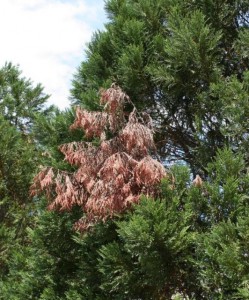
Flag branch on Leyland Cypress. Photo Credit: UF/IFAS
What are the options for Florida panhandle landscapers and homeowners? If you have a tree exhibiting symptoms of Seiridium canker, pruning the “flag” branches out several inches below the canker can prolong the life of the tree but is very unlikely to save it. The only long term sustainable option is to replace Leyland cypress with species that are resistant to the disease. The following are good examples of species that could be considered:
|
Common Name
|
Scientific Name
|
|
Atlantic white cedar
|
Chamaecyparis thyoides
|
|
Southern red cedar
|
Juniperus silicicola
|
|
Arizona cypress
|
Cupressus arizonica var. glabra
|
|
Mexican cypress
|
Cupressus lusitanica
|
|
Oriental arborvitae
|
Platycladus orientalis
|
|
“Green Giant” arborvitae
|
Thuja x ‘Green Giant’
|
|
Kashmir cypress
|
Cupressus cashmeriana
|
|
Chinese funeral cypress
|
Cupressus funebris
|
|
Chinese cypress
|
Cupressus chengiana
|
|
Hinoki cypress
|
Chamaecyparis obtusa
|
|
For more information read the University of Florida publication, Seiridium Canker of Leyland Cypress.
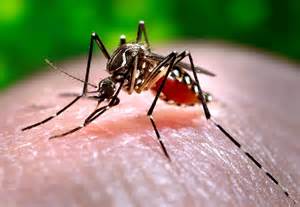
by Sheila Dunning | Aug 13, 2015
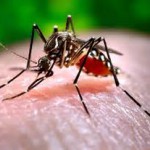 University of Florida researchers maintain a constant vigilance on the potential for mosquito-borne illness concerns. UF/IFAS Florida Medical Entomology Laboratory in Vero Beach tracks rainfall, groundwater levels, mosquito abundance, wild bird populations and virus transmission to animals including horses and sentinel chickens. When mosquito infection rates reach the levels that can infect humans, alerts are sent out. Through the Florida Department of Health, the Centers for Disease Control and Prevention Health Alert Network issues advisories on a weekly basis to those counties at risk. Such an alert was issued for Gadsden, Polk and Walton Counties for the week of July 19-25, 2015. Unfortunately, the first 2015 confirmed human case of West Nile Virus illness in Florida occurred in Walton County shortly thereafter. It was just another reminder for people to take action to reduce their potential for mosquito development in their landscape.
University of Florida researchers maintain a constant vigilance on the potential for mosquito-borne illness concerns. UF/IFAS Florida Medical Entomology Laboratory in Vero Beach tracks rainfall, groundwater levels, mosquito abundance, wild bird populations and virus transmission to animals including horses and sentinel chickens. When mosquito infection rates reach the levels that can infect humans, alerts are sent out. Through the Florida Department of Health, the Centers for Disease Control and Prevention Health Alert Network issues advisories on a weekly basis to those counties at risk. Such an alert was issued for Gadsden, Polk and Walton Counties for the week of July 19-25, 2015. Unfortunately, the first 2015 confirmed human case of West Nile Virus illness in Florida occurred in Walton County shortly thereafter. It was just another reminder for people to take action to reduce their potential for mosquito development in their landscape.
With all the quick afternoon thunderstorms and frequent irrigation events, now is the time to check out where the water is collecting in your yard. The female Culex nigripalpus mosquitoes lay their eggs in temporary flood water pools; even very small ones such as pet watering bowls, bird baths and upturned Magnolia leaves. Dumping out the collection containers every couple of days can greatly reduce the population.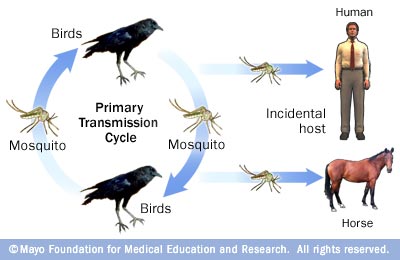
Becoming infected with West Nile Virus is not easy. Mosquitoes usually obtain the virus by feeding on infected wild birds, many of which have migrated from areas that have ongoing West Nile Virus outbreaks. Once the mosquito has drawn infected blood from the bird, the virus goes through a temperature-dependent incubation period within the mosquito. Then, when the infected mosquito “bites” a human or horse the virus mixed in saliva is released into the blood stream of the second host. West Nile Virus is not transmitted from one human to another. Nor is it transmitted from bird to human or from horse to human.
Thanks to a devoted set of researchers and government public health officials, here in Florida we are able to monitor mosquito-borne illnesses quickly and effectively. Additional partners, such as local veterinaries, sentinel bird stations and the Florida Fish and Wildlife Conservation Commission (FWC) serve as reporters for virus population. Should an individual come across dead birds without an obvious cause, reporting them to the FWC at www.myfwc.com/bird/ is the best thing to do.
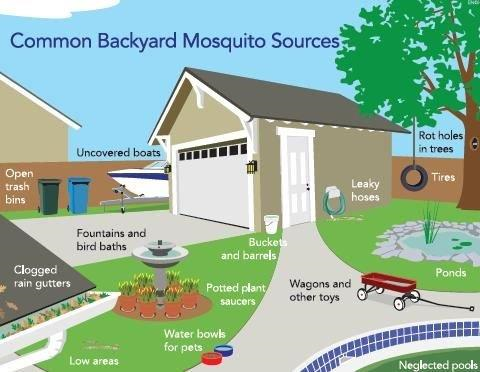 As for protecting yourself, here are a few pointers:
As for protecting yourself, here are a few pointers:
Stay indoors at dusk (peak mosquito biting time).
If you must be outside, wear long sleeves and pants and/or mosquito repellents containing the active ingredient DEET.
Repair torn door and window screens.
Remove unnecessary outside water sources.
Flush out water collected in outdoor containers every 3-4 days.
Disturb or remove leaf litter, including roof gutters and covers on outdoor equipment.
For additional information, contact your local Extension office about obtaining a free Florida Resident’s Guide to Mosquito Control.
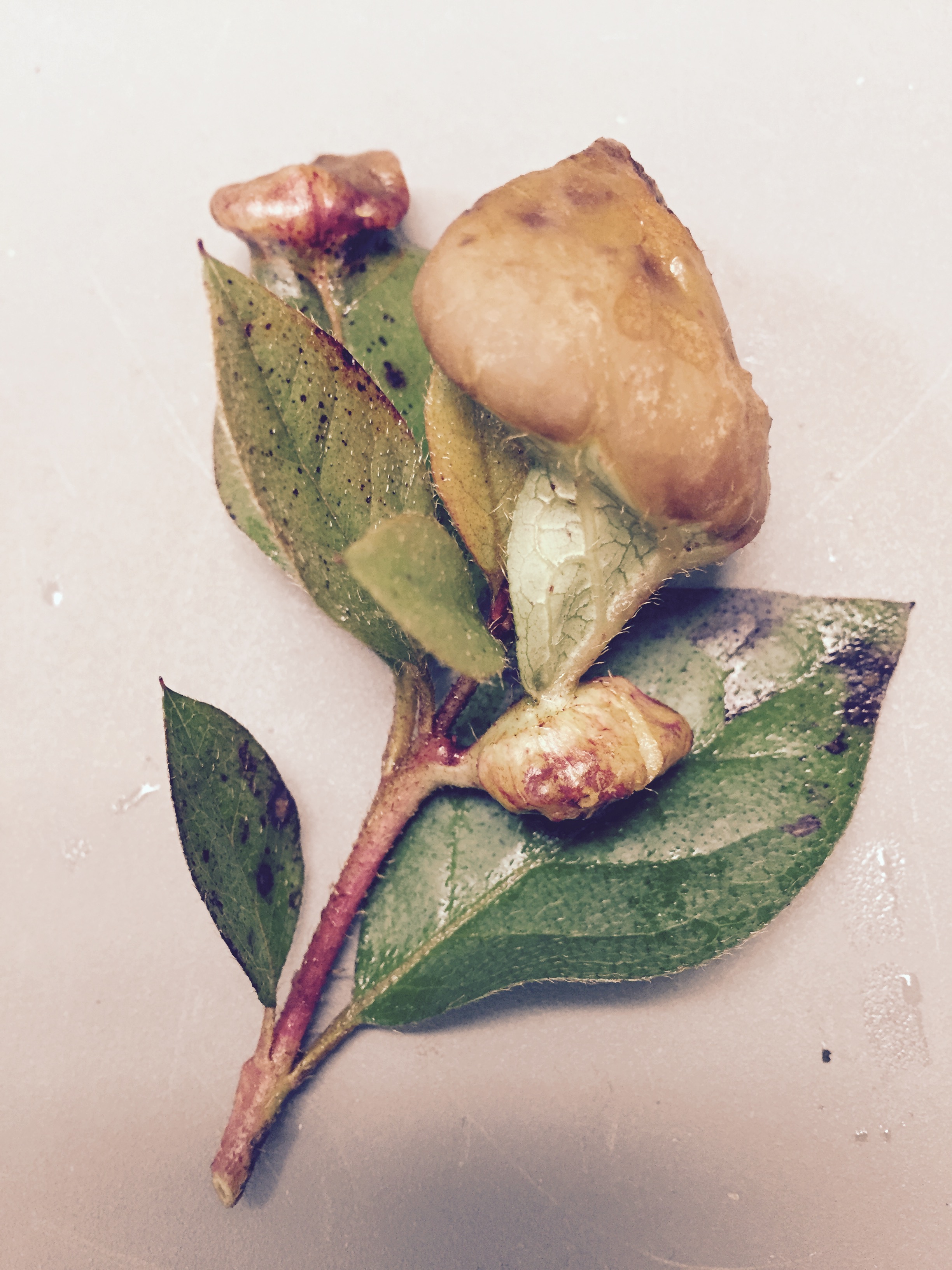
by Mary Salinas | Apr 28, 2015
Fleshy distortions are appearing on some azaleas this time of year. What is responsible for this? A fungus, Exobasidium vaccinia, likes our cool, wet spring weather and infects azalea leaves and flower petals. This disease likes a cool, wet, shady and protected environment.
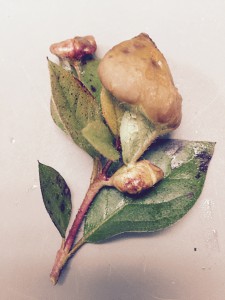
Azalea gall. Photo credit: Mary Derrick, UF/IFAS Extension.
The infection causes the plant to form large, fleshy, distorted tissues known as galls. The galls produce a white powdery coating that is capable of producing more spores that will continue to cause new infections if left on the bush. The gall will eventually turn dry and brown and fall to the ground. Sometimes there are only a few leaves infected or there may be quite a few on a bush.
Not to worry – this is not likely to cause significant harm to your azalea. The best plan of action is to remove the galls as soon as possible and dispose of them in the trash or burn them to prevent reinfection of your plants. Avoid any irrigation that sprays water onto the leaf surfaces as the moisture creates a favorable environment for disease. Once you see this gall forming, there is no chemical control that is effective.
For more information on caring for your azalea:
Azaleas at a Glance
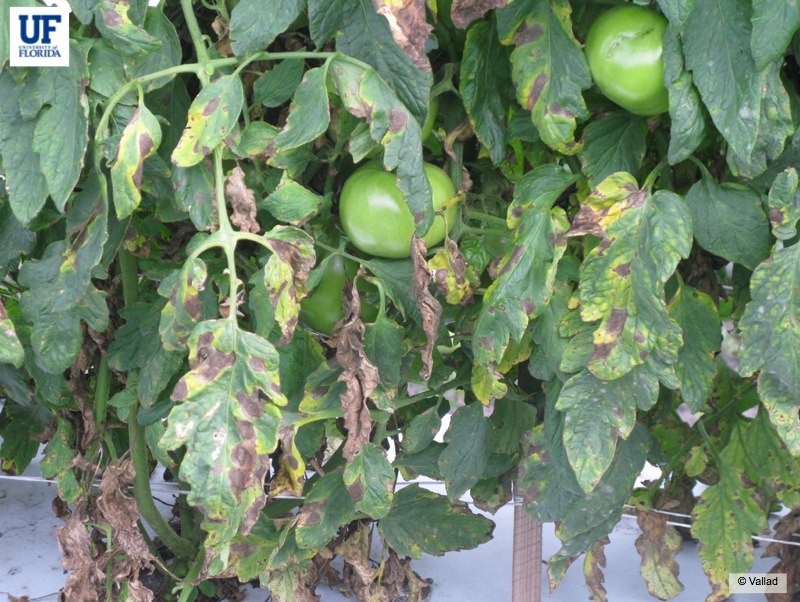
by Blake Thaxton | Apr 21, 2015
With the over abundance of rainfall the western panhandle has seen in recent weeks, tomato gardeners need to be aware of foliar diseases that could appear. Tomato leaves are an ideal host when moisture is present on the leaf surface. There are several of these diseases that, if not managed, can destroy the garden.
Early Blight

Advanced symptoms of Early Blight (Photo Credit: UF/IFAS U-Scout website)
Early Blight is a fungal disease that can affect tomato leaves and fruit. The disease is most prominent when temperatures are 80°F and excess moisture is present from rain or irrigation. The most classic system is the presence of leaf lesions that are approximately 1/2 inch in diameter.
Bacterial Spot

Bacterial Spot on a Tomato leaf (Photo Credit: Hank Dankers, From U-Scout)
Bacterial Spot can also cause problems for Florida tomato gardeners in rainy and high temperature periods. Generally the symptoms are darkened circular lesions on the leaves and fruit. Sometimes bacterial spot can be confused with other leaf lesion diseases. The bacterial spot will ooze when cut where as fungal type lesions will not.
How to prevent foliar diseases in tomato:
- Always start with disease free seed and transplants.
- Irrigate early in the day to minimize the time the leaves stay wet. Use drip irrigation when possible.
- Remove blighted leaves when the garden is dry. This technique should not be relied on exclusively.
- Remove and destroy crop residue at the end of the growing season. If not removed, it can become a breeding ground for disease next year.
- Rotate to different plant families that are not affected by the same diseases.
- Spray protective fungicides such as Mancozeb, Copper, and Chlorothalonil (for example sold as Daconil) when the conditions are right for disease (higher temperatures, excessive moisture, and rainfall).
If you have questions about these diseases or other tomato diseases, please comment below or call your local UF/IFAS Extension Agent.
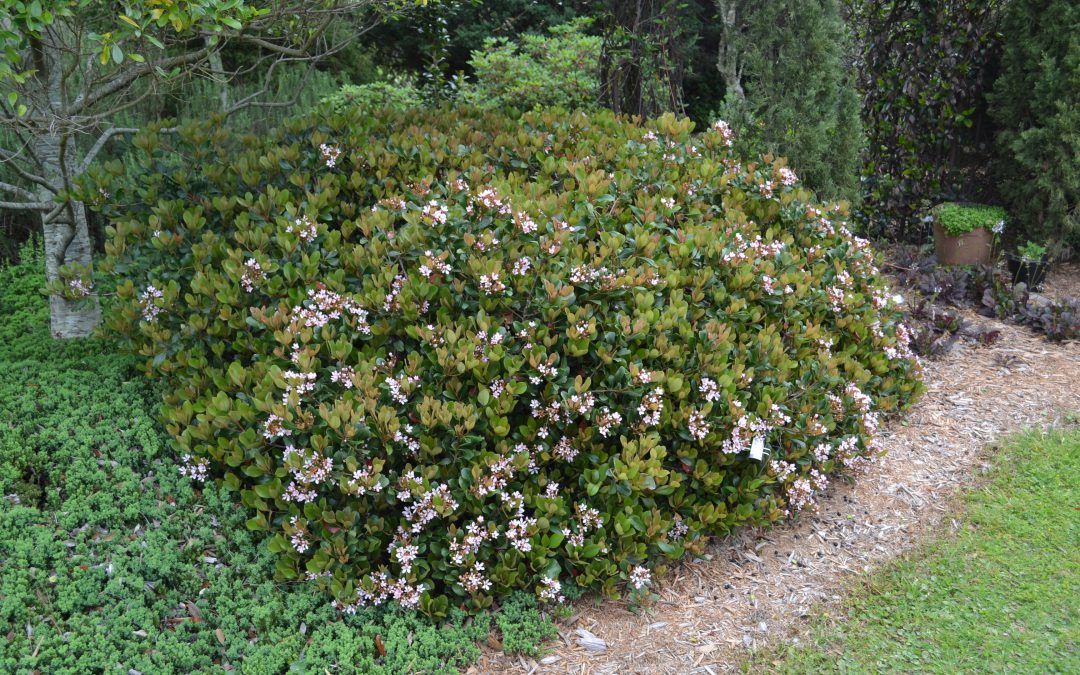
by Beth Bolles | Apr 7, 2015
One of the most commonly used shrubs in landscapes is the Indian hawthorn, Rhapheolepsis indica. Although not native to Florida, it can be a very attractive shrub when used properly in landscapes. Plants offer spring flowers in pinks and whites followed by berries that are a food source for birds.
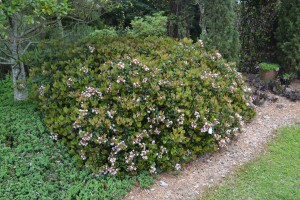
Indian hawthorn as a single planting can be attractive.
Indian hawthorn plants in landscapes are susceptible to a couple of pests that create unattractive and unhealthy plants. A leaf spot fungus called Entomosporium leaf spot easily spreads from infected plants through irrigation and rainfall leading to leaf discoloration, leaf drop, and dieback of limbs. Scale insects can also be common on leaves causing yellowing and dieback. The fungal problem is difficult to manage on heavily infected plants but the scale can be managed with a low toxicity pesticide choice such as a horticulture oil.
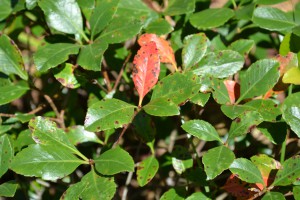
A heavy infection of leaf spot fungi is often too difficult to manage when plants are routinely irrigated.
Most often the problems on Indian hawthorn, especially fungal, are the result of poor management. This shrub likes sun, well-drained soil, and no overhead irrigation. Once established, plants should need little supplemental irrigation and water should only be applied to the base of plants. Since plants normally form a rounded mound, there is also little need for pruning if planted in a correct spot and spaced appropriately when planting. Most landscape installations of Indian hawthorn space plants based on the gallon pot size and not the mature size of the plant which is about 3-5 feet in height and spread.
Indian hawthorn can still be a good selection for homeowners. Buy healthy plants without any signs of spots on leaves and don’t plant a monoculture of these plants in the landscape. If one plant does have serious pest issue it is easier to either treat or remove one plant versus a mass planting.
















